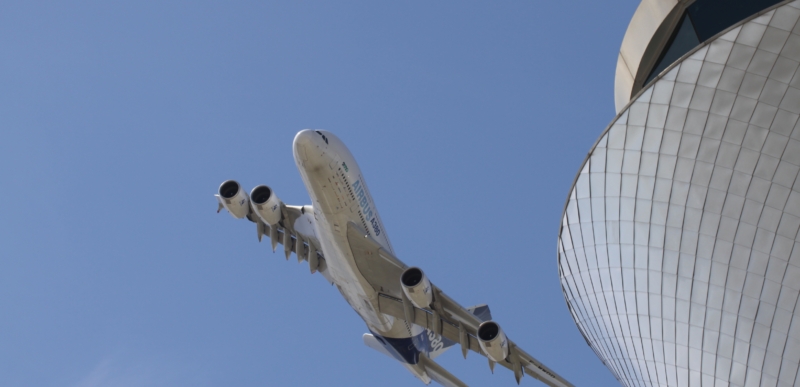Last weekend saw the Royal International Air Tattoo, or ‘RIAT’, celebrate air power from around the world and the 75th anniversary of the Battle of Britain, with a stunning three day airshow.
The event was as spectacular as ever, showcased a range of aircraft from Spitfires to F16s alongside exhibits from a range of companies within the aviation industry.
The air traffic control operation at RIAT is manned solely by volunteers from across the country, which this year consisted of 14 civilian air traffic control staff – 11 of which usually work for NATS – and two military secondees.

The team at Fairford, where the air show is held, is supported by a specialist group of Brize Radar (RAF Brize Norton) controllers and assistants. All inbound aircraft and certain display participants are positioned by this team in accordance with the flying programme and order of performance. They are vital to managing the outbound flow of aircraft on departure day and safely integrating everything from fast jets to microlights into the surrounding complex airspace.
Having civil and military working alongside each other to manage a range of air traffic is nothing new to NATS controllers, as both civil and military air traffic controllers are based within our Swanwick centre in Hampshire and standard practice sees them working together to integrate and successfully manage the transit of both types of air traffic.
As well as safely managing around 1000 aircraft movements over a six day period, the volunteer team within the tower also staff an Emergency Desk which acts as the first point of contact for all emergency calls during the show period. The staff managing this position coordinate access to the operational areas for the emergency and support services as well as working closely with the Emergency Control Centre who coordinate the response of all the emergency services on the airfield.
The air tattoo generates a significant but temporary demand blip for controllers at our Swanwick centre who work on Sector 23, which contains RAF Fairford. However the seamless interface that has been developed through strategic planning and tactical working with NATS Swanwick, Brize Radar and RIAT Air Traffic Control means that capacity can be anticipated, allowing the increase in demand to be accommodated for and managed effectively.
The Royal International Air Tattoo has been a great success this year and it is a brilliant testament to the relationship that has been built and developed by civil and military controllers.
Take a look at even more RIAT information by browsing through the official RIAT Twitter timeline – @airtattoo or visiting their website www.airtattoo.com
Comments
Please respect our commenting policy and guidelines when posting on this website.















